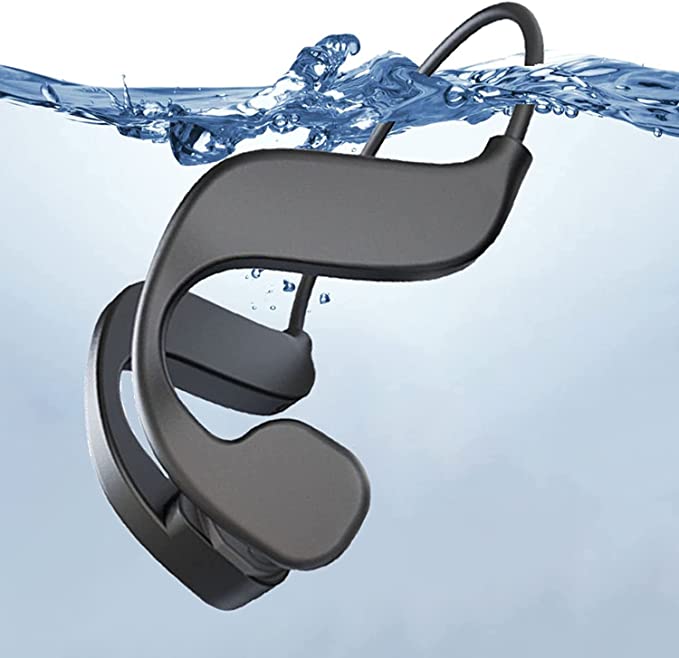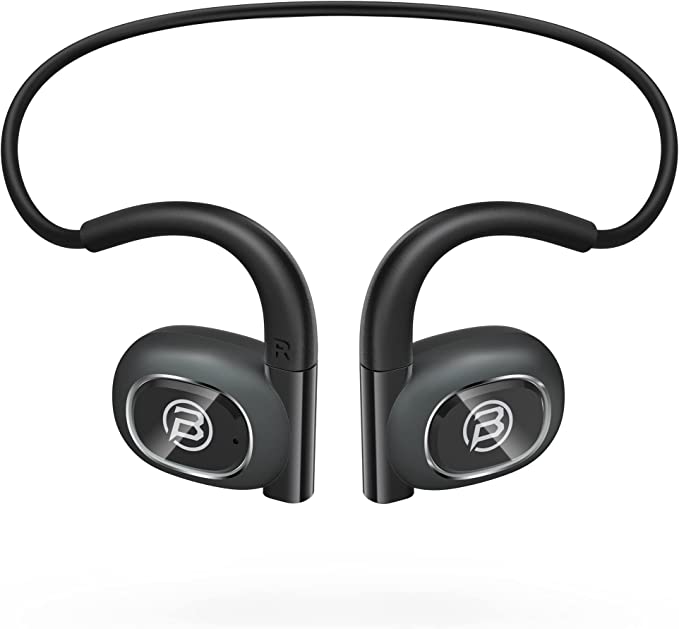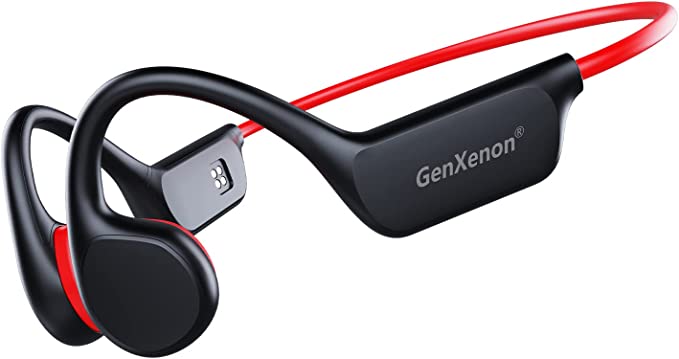Imagine this: you’re gliding through the cool water of a pool, each stroke a rhythm, your favorite motivational track pulsing in time with your effort. Or perhaps you’re navigating a bustling city street on your bike, the urban soundscape a familiar backdrop, yet you’re also tuned into an engaging podcast. For a long time, merging personal audio with immersive activities or environments demanding acute awareness felt like a compromise. Traditional earbuds could block out crucial external sounds, while bulky headphones were impractical for vigorous movement or aquatic adventures. But what if sound could embark on a different journey, one that keeps your ears open to the world while delivering rich audio directly to your inner sense of hearing? This isn’t science fiction; it’s the fascinating reality of bone conduction technology, often coupled with remarkable feats of engineering like IP68 waterproofing, as seen in devices like the IKXO Y8 Bone Conduction Headphones.

A Different Kind of Hearing: Journey into the World of Bone Conduction
The story of bone conduction is more than just a modern technological marvel; it has intriguing echoes from the past. Legend has it that Ludwig van Beethoven, as his hearing began to wane, discovered he could perceive the vibrations of his piano by biting down on his conducting baton pressed against the instrument. While anecdotal, this illustrates the fundamental principle: sound can be perceived not just through airwaves entering our ear canals, but also through vibrations transmitted through the bones of our skull.
So, how does this “alternative hearing” pathway actually work? Traditional hearing, or air conduction, involves sound waves traveling through the air into your ear canal, vibrating the eardrum. These vibrations are then amplified by tiny bones in the middle ear (the ossicles) and transmitted to the cochlea, a spiral-shaped organ in the inner ear, which converts them into electrical signals that the brain interprets as sound.
Bone conduction, however, offers a clever detour. Devices employing this technology, like the aforementioned IKXO Y8, typically feature transducers that rest on the cheekbones, just in front of the ears. Instead of projecting sound into the air, these transducers generate micro-vibrations. These vibrations travel through the bones of your skull – think of it as a gentle, internal resonance – directly to the cochlea. The cochlea doesn’t much care how it receives these vibrations; it processes them into neural signals all the same. It’s like sending a message directly to the recipient’s private inbox, bypassing the general mailroom.
The implications of this are profound:
* Situational Awareness: This is perhaps the most celebrated benefit. Because your ear canals remain completely open, you can still hear ambient sounds: traffic horns, a colleague calling your name, the chirping of birds on a trail. For cyclists, runners, and even pedestrians in urban environments, this is a significant safety advantage.
* Comfort for Some: Many individuals find in-ear earbuds uncomfortable or irritating, especially during long listening sessions or if they have sensitive ear canals. Bone conduction headphones, by their very nature, avoid intruding into the ear.
* An Alternative for Certain Hearing Conditions: For individuals with conductive hearing loss (where sound transmission through the outer or middle ear is impaired), bone conduction can sometimes provide a clearer pathway for sound to reach a healthy inner ear.

Braving the Elements: Understanding IP68 Waterproofing
Now, imagine taking this open-ear audio experience into environments where traditional electronics fear to tread – like underwater. This is where robust waterproofing becomes paramount. The IKXO Y8 headphones, for example, claim an IP68 rating. This isn’t just a random jumble of letters and numbers; it’s a standardized code that speaks volumes about a device’s resilience.
“IP” stands for Ingress Protection, a global standard (IEC 60529) that classifies the degree of protection provided by enclosures of electrical equipment against the intrusion of solid objects (like dust and dirt) and liquids.
* The first digit after IP, in this case, ‘6’, pertains to protection against solid particles. A ‘6’ rating signifies that the enclosure is dust-tight – no ingress of dust is permitted, offering the highest level of protection against solids.
* The second digit, ‘8’, indicates protection against liquids. An ‘8’ rating means the device is protected against continuous immersion in water under conditions that are specified by the manufacturer. This typically means the device can be submerged deeper and for longer than those with a lower rating (like IPX7, which usually covers immersion up to 1 meter for 30 minutes).
For a pair of headphones to be truly “swimming headphones,” an IP68 rating is a critical benchmark. It suggests that the device, like the IKXO Y8, is engineered to withstand the pressures and prolonged exposure associated with swimming laps or enjoying other aquatic activities. The specific depth and duration for an IPX8 rating are defined by the manufacturer, as “continuous immersion” can vary, but it always represents a step up in ruggedness.
A pro-tip for those considering bone conduction headphones for swimming: while the technology itself works by vibrating bone, the clarity of sound underwater can often be significantly improved by using silicone swimming earplugs. This might seem counterintuitive – why block your ears if the sound isn’t going through them? The earplugs serve two purposes: they prevent water from entering the ear canal, which can create distracting sensations and muffle perceived sound, and they reduce ambient noise from the water and your surroundings. This allows the vibrations from the bone conduction transducers to be perceived more distinctly, creating a more immersive underwater audio experience. Some product packages, as has been noted by users of similar devices, thoughtfully include such earplugs.

Spotlight on Innovation: How Technology Converges (Using IKXO Y8 Claimed Features as Examples)
Modern personal audio devices are rarely about a single technology; they are a confluence of innovations designed to enhance user experience. Let’s explore some key features often found in advanced bone conduction headphones, using the specifications claimed for the IKXO Y8 as illustrative examples.
Liberated Playlists: The Magic of Onboard MP3 Storage
One of the most liberating features for athletes, especially swimmers or anyone looking to minimize carried gear, is a built-in MP3 player. Imagine the freedom of heading out for a run, a bike ride, or diving into the pool without needing to tether yourself to a smartphone. The IKXO Y8, for instance, is described as having 32GB of internal memory. To put that into perspective, the manufacturer suggests this can hold approximately 8,000 music tracks. While the actual number heavily depends on audio file formats and compression rates, 32GB offers substantial storage for a vast personal music library.
Furthermore, the support for a variety of audio formats, including APE, FLAC, MP3, WAV, and WMA, is noteworthy. MP3 is a common, convenient format, but for audiophiles, the inclusion of lossless formats like APE and FLAC is a significant plus. “Lossless” means these formats preserve all the original audio data from a recording, offering a richer, more detailed sound compared to “lossy” formats (like standard MP3s) which discard some data to reduce file size. For a focused workout or a relaxing swim, having your favorite high-fidelity tracks directly on the device, with no reliance on streaming or a phone, is a genuine advantage.

The Unseen Connection: The Power of Bluetooth 5.0
While onboard storage is excellent for solo, untethered activities, the ability to connect to other devices remains crucial. This is where Bluetooth technology comes in. The IKXO Y8 is listed with Bluetooth 5.0. This version of the ubiquitous wireless standard brought several improvements over its predecessors, which are particularly beneficial for wearable audio devices:
* Improved Speed and Range: Bluetooth 5.0 theoretically offers up to twice the data transfer speed and four times the range of Bluetooth 4.2. While real-world range (the IKXO Y8 product page mentions a “long transmission distance is 10 meters”) is affected by obstacles and interference, the underlying improvements contribute to a more stable connection.
* Lower Energy Consumption: This is vital for battery-powered devices like headphones, allowing for longer playback times or smaller, lighter batteries.
* Enhanced Stability: Fewer dropouts and a more consistent audio stream lead to a better user experience, whether you’re taking calls or listening to music streamed from your phone or computer.
So, after a swim using the MP3 player, you could seamlessly switch to Bluetooth mode to take a call or listen to a podcast from your phone while you cool down.
Ergonomics and Endurance: Designing for the Active User
Comfort and longevity are key for any wearable designed for active use. The open-ear design inherent to bone conduction headphones, as exemplified by the over-ear, open-ear form factor of the IKXO Y8, immediately addresses the discomfort some users experience with in-ear devices. The absence of anything inserted into the ear canal can reduce pressure and irritation, especially during long periods of use or sweaty workouts.
The material, listed as plastic for the IKXO Y8, contributes to a lightweight build – a quality often described by manufacturers of such devices with phrases like “light as a feather.” While subjective, minimizing weight is crucial for ensuring the headphones stay in place and don’t become a distraction during dynamic movements.
Finally, practical battery life is essential. The IKXO Y8 product information indicates around 8 hours of playback. This duration should comfortably cover most extended workouts, daily commutes, or several shorter activity sessions before needing a recharge, allowing users to focus on their activity rather than battery anxiety.
The Open-Ear Advantage: A Symphony of Sound and Safety
The philosophy behind open-ear listening extends far beyond the niche of specialized sports. For anyone moving through an environment where auditory awareness is key, these devices offer a compelling solution.
* Urban Commuters: Cyclists and pedestrians can enjoy their audio while remaining alert to traffic, sirens, and other crucial environmental cues.
* Outdoor Adventurers: Hikers and trail runners can appreciate the sounds of nature or hear approaching wildlife or other people on the trail.
* Office Environments (Pre-Pandemic & Hybrid): In some settings, being able to listen to audio while still being accessible to colleagues was a benefit.
* All-Day Comfort: For individuals who simply dislike the sensation of having their ears blocked, or who need to wear hearing protection intermittently and want an audio solution that doesn’t interfere, bone conduction offers a comfortable alternative for prolonged wear.
It’s also a nod towards inclusivity. For certain individuals with outer or middle ear conditions that make traditional headphone use difficult or impossible, bone conduction can be a gateway to personal audio.
Conclusion: Riding the Wave of Audio Innovation
The journey of sound, from its physical origins to its perception in our brains, is a marvel of biology and physics. Technologies like bone conduction and advanced IP68 waterproofing don’t just offer new ways to listen to music; they represent our ongoing quest to seamlessly integrate our digital lives with our physical experiences, breaking down barriers and expanding the possibilities of how and where we can enjoy audio.
Devices such as the IKXO Y8, with their claimed features of bone conduction, IP68 rating, onboard MP3 storage, and Bluetooth 5.0 connectivity, exemplify this trend. They showcase how different technological threads can be woven together to create products that cater to active, multifaceted lifestyles. By understanding the science behind these innovations, we can better appreciate the ingenuity involved and make more informed choices about the tools that help us navigate and enrich our world. The future of personal audio is not just about higher fidelity or smaller devices; it’s about smarter, more adaptable, and more deeply integrated listening experiences. And that, indeed, sounds good.



